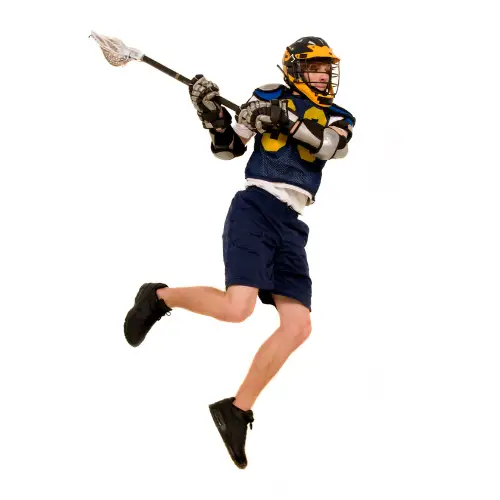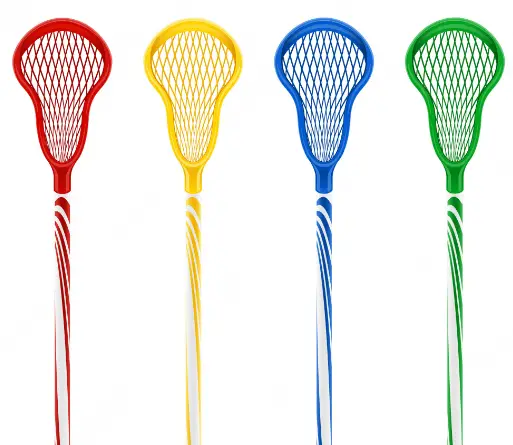Lacrosse is a popular sport that requires a specific set of equipment to play effectively. One of the most important pieces of equipment for midfielders in lacrosse is their stick. Choosing the right lacrosse stick is essential for midfielders as it can have a significant impact on their performance on the field. With so many options available on the market, it can be challenging to know which stick is best suited for a midfielder’s specific needs. In this article, we will explore the key factors to consider when selecting a lacrosse stick for midfielders, including the length of the stick, the shape of the head, and the materials used in its construction. By the end of this article, readers will have a better understanding of what to look for when choosing the right lacrosse stick for midfielders.
What is a midfielder’s role in Lacrosse?
In lacrosse, the midfielder is a key position that plays both offense and defense. Midfielders are responsible for running up and down the field, and they are usually the players who are in the best shape on the team. They play a crucial role in the game because they are involved in both the offensive and defensive aspects of the game.
Offensively, midfielders are responsible for creating scoring opportunities by dodging past defenders, passing the ball to open teammates, and taking shots on goal. They must also be able to control the pace of the game by slowing down or speeding up the ball movement as needed.
Defensively, midfielders must be able to defend their own goal as well as help out on the defensive end of the field. They need to be able to slide to cover open attackers, force turnovers, and create loose ball situations for their team to gain possession.
Overall, the midfielder is a versatile and important position in lacrosse, requiring a unique blend of speed, skill, and endurance.
What should you look for when choosing a Lacrosse stick for midfielders?
When choosing a lacrosse stick for midfielders, there are several important factors to consider:
- Length: A midfield lacrosse stick should be between 40 and 42 inches long. This length provides a balance between control and maneuverability.
- Weight: The weight of the stick is also important. A lighter stick allows for quicker and more agile movements, while a heavier stick can provide more power and stability.
- Head Shape: The head of the stick is also an important factor to consider. Midfielders should choose a head that has a versatile design that can be used for both offensive and defensive play. A wider head is better for ground balls, while a narrower head provides better accuracy and control for shooting.
- Material: Lacrosse sticks can be made of different materials, such as aluminum, titanium, and composite materials. Each material has its own benefits and drawbacks, so it’s important to consider what you prioritize most in a stick.
- Brand and Price: There are many different brands of lacrosse sticks on the market, and prices can vary greatly. It’s important to do your research and choose a reputable brand that fits your budget.
What should be the shape of the lacrosse stick head?
The shape of a lacrosse stick head is governed by rules set by the sport’s governing bodies. According to the rules of the sport, the head of a lacrosse stick must be between 6.5 and 10 inches wide at its widest point and between 10 and 12 inches long from the bottom of the head to the top of the scoop.
The shape of the head can vary depending on the player’s position and playing style. Attackmen and midfielders typically prefer narrower heads, which provide better control and accuracy when shooting and passing. Defensemen typically prefer wider heads, which help them scoop ground balls and make interceptions.
The shape of the head is also influenced by the amount of curve, or “offset,” that the stick has. The offset is the angle at which the head of the stick is set back from the handle. A higher offset gives the player more leverage when cradling, passing, and shooting, while a lower offset provides a quicker release and better ball control. However, the offset cannot exceed a certain limit set by the governing bodies of the sport.
What types of materials are best for lacrosse stick shafts?
Lacrosse stick shafts can be made from a variety of materials, each with its own unique properties and benefits. Here are some of the most common materials used for lacrosse stick shafts:
- Aluminum: Aluminum shafts are popular among lacrosse players because they are lightweight, durable, and relatively affordable. They are also easy to grip, even in wet conditions.
- Composite: Composite shafts are made from a combination of materials, usually carbon fiber and other composites. They are strong, lightweight, and offer good flexibility and shock absorption. They are also less likely to dent or bend compared to aluminum shafts.
- Titanium: Titanium is a strong and lightweight metal that is used in high-end lacrosse shafts. It offers excellent strength-to-weight ratio and provides good durability and flexibility.
- Scandium: Scandium is a rare metal that is lighter and stronger than aluminum. Scandium shafts are very durable, resistant to denting and bending, and provide good flex and feel.
- Wood: Wooden shafts are traditional and offer a classic look and feel. They are usually made from hickory, ash, or maple wood, and are known for their durability and strength. However, wooden shafts tend to be heavier than other materials, and may require more maintenance and care.
How long should a midfielder’s lacrosse stick be?
The length of a midfielder’s lacrosse stick can vary based on personal preference and playing style, but according to the official rules of lacrosse, the overall length of the stick (including the head) must be between 40 and 42 inches for men’s lacrosse. Additionally, the length of the shaft alone must be between 30 and 32 inches. It’s important to note that some leagues or organizations may have their own specific regulations regarding stick length, so it’s always a good idea to check with your coach or league officials for any specific guidelines or rules.
Conclusion
In conclusion, choosing the right lacrosse stick for midfielders requires careful consideration of several factors, including head shape, shaft material, weight, length, and other important features. By doing your research and taking the time to select the right stick, you can give yourself the best chance of success on the field. Ultimately, the right stick will be one that feels comfortable in your hands, provides the level of control and power you need, and fits your individual playing style.







